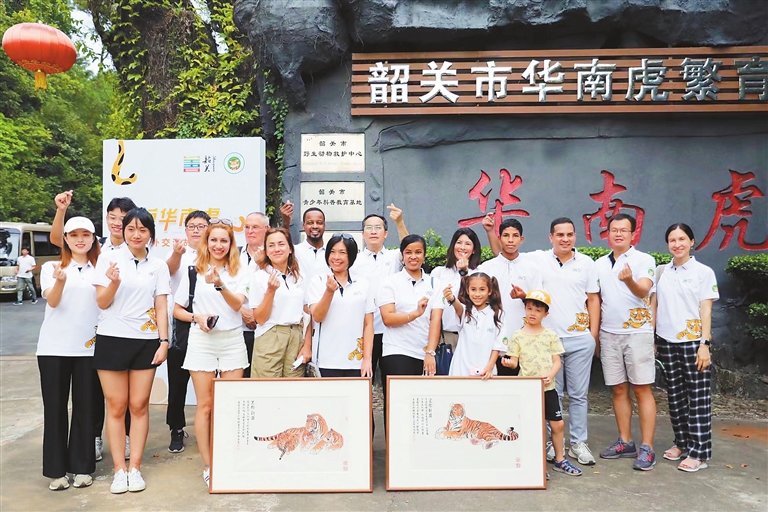
Wang Haolan
Holly_cn@163.com
PROTECTION of threatened tiger species — especially of the critically endangered South China tigers — has become a hot topic in the Year of the Tiger.
Six “tiger guardians,” who include tiger breeders, scientists, architects, artists and international volunteers, marked the annual International Tiger Day on Friday night through sharing their insights and experiences on why South China tigers become critically endangered and what has been and will be done to protect them at a story-sharing event held at the South China Tiger Breeding and Research Base in the city of Shaoguan in northern Guangdong Province.
Lei Shengqiao, a head breeder at the base, kicked off the story-sharing night with spectacular news — Mengmeng, a female South China tiger, gave birth to a male cub on the early morning of July 21, increasing the total number of tigers at the base to 14.
Italian ecosystem scientist and engineer Matteo Convertino, who is an associate professor at the Institute of Environment & Ecology of Tsinghua Shenzhen International Graduate School and a participant of a trip to the breeding base organized by Shenzhen Daily on May 22, gave a speech based on his experience with the critically endangered species and his ecosystem engineer know-how.
“Vegetation and water resources play an important role in the preservation of South China tigers, as well as many other predator animal species,” Convertino said. “We know that there are certain nature reserves in Shaoguan which are working on introducing the tigers to the wild. What we also need to pay attention to is that the western and southern parts of Shaoguan have the largest and healthiest forest areas in Guangdong Province, forming an ecological corridor where South China tigers are supposedly going to move.”
“I truly believe that nature’s symphony is about the balance between stress and evolution,” Convertino said. “Evolution can be played out by genetics and population consideration, but the stress component is really about the presence and maintenance of keystone vegetation and resources that we can control directly at the ecosystem scale.”
Lan Tianming, head of the endangered animal genome research group at BGI Research, stated that gene management may make a great difference in enhancing the effective reproduction of South China tigers.
“We carried out research on genetic lineages on major tiger species in the world and found out that there are about 600 harmful mutations in the lineage of South China tigers, which may cause some diseases and affect individual development,” Lan said.
(Continued on P3) | 
